Scoping trip: Newcastle Grainger Market
By Tom Jackson
Following the highly successful multimodal analysis of Leeds Kirkgate Market, the ‘voices’ team are planning a wider study of city markets in the North of England. The intention of this project is to generate much broader data regarding city markets as a locus of superdiversity (whilst avoiding any sort of comparative analysis) and to trial a range of new multisensory research methods. At a planning meeting in August 2016, it was agreed that careful consideration should be given to which markets are selected for the study and a number of criteria were defined. These included that the market should be located within an inner-city environment, should have a number of ‘fixed’ stalls and should be well established. Most importantly though, a study of the market must have the potential to generate new knowledge, building upon the existing research findings, rather than simply creating new data with a different locality.
Web-based research allowed the team to create a shortlist of potential locations (including Newcastle Grainger Market, Rotherham Centenary Market and Dewsbury Market) but it was agreed that all of the markets should also be visited by members of the team in order to generate a series of field reports which would inform the final selection process. This post is a report on the visit to Newcastle Grainger Market on August 23rd 2016. The multidisciplinary team consisted of Janet Watson (languages), Elisabetta Adami (multimodal analysis) and Tom Jackson (ethnography and multisensory research methods). The visit was documented using a narrated audio walk (as a record of the team’s located reflections), interactive 360° photography (in order to capture a sense of the space and the layout of the stalls) and a binaural audio recording (for the purpose of analysing the lived experience of the market and the diversity of spoken languages).
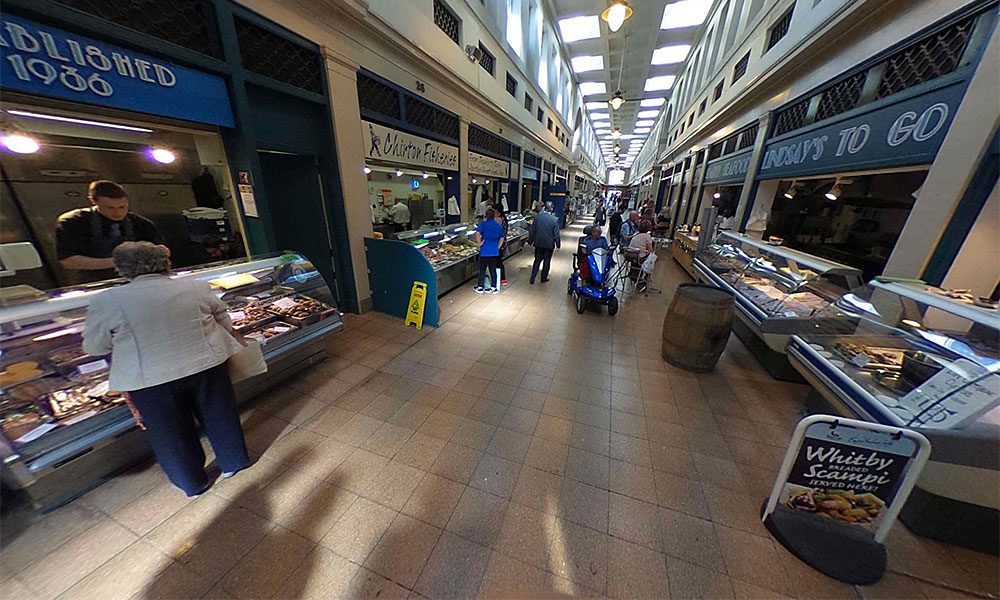
Figure 1
Entering Newcastle Grainger Market (from Nun Street) quickly presents a number of very familiar sights and smells. A long, high-ceilinged corridor is lined with the seafood and butcher’s stalls so typically associated with the British market. (Figure 1) However, there are indications that this area of the market also aims to attract a lunchtime crowd with a number of hot and freshly prepared ‘to go’ meals on offer.
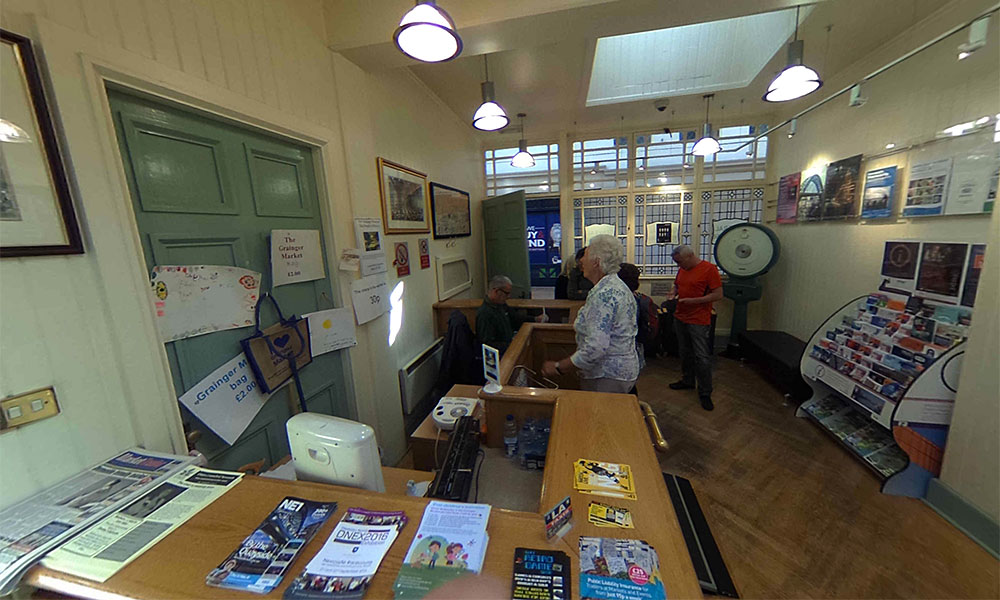
Figure 2
The ‘weigh house’ (Figure 2) functions as both the customer information centre and a place in which visitors can be weighed for the small price of thirty pence (which appeared to be a very popular service, with a constant flow of customers). The member of staff had worked at the market for fifteen years and offered some valuable insights into how much the place had changed. He indicated that many more ‘upmarket’ stalls had been installed in recent years, citing the high rental prices as the reason for this change.
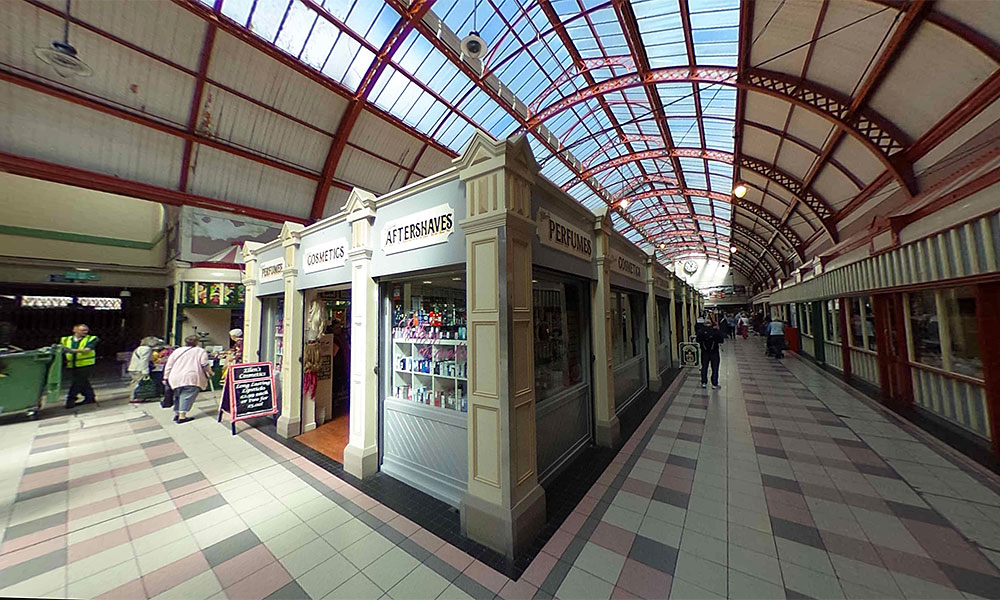
Figure 3
In stark contrast to the rest of the market, the west side of the building offers a bright, open space. (Figure 3) The arched roof with glass panels (reminiscent of a railway station) and the much wider walkways offer a completely different sensory experience. This area includes many shops and restaurants with furnishings, signage and language clearly targeted towards a lunchtime audience of local professionals, such as the ‘bistro cafe’ and ‘independent artisan bakery’. (Figure 4)
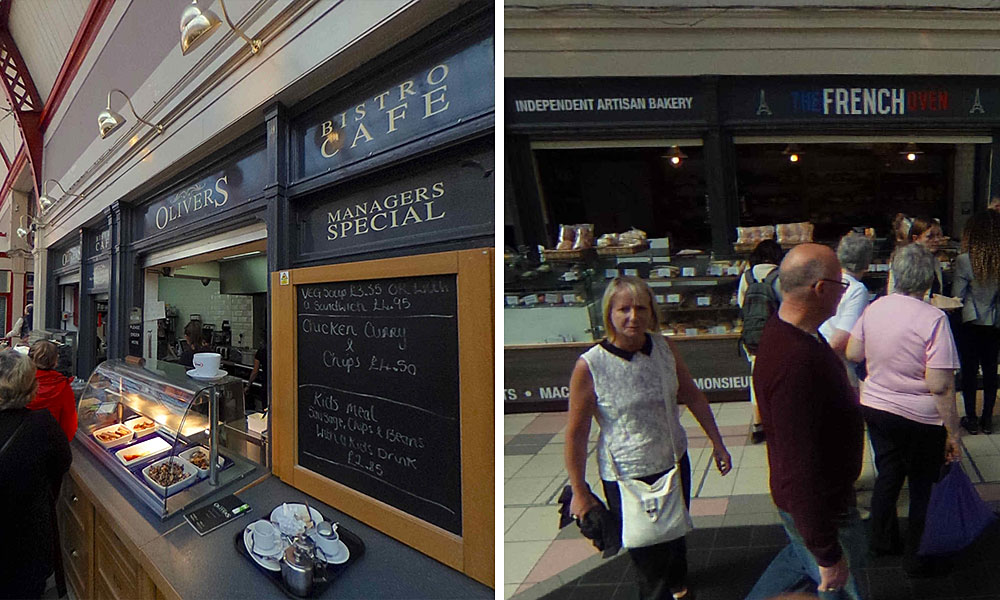
Figure 4
Many stalls appeared to be undergoing renovation, demonstrating financial investment in the market. (Figure 5)
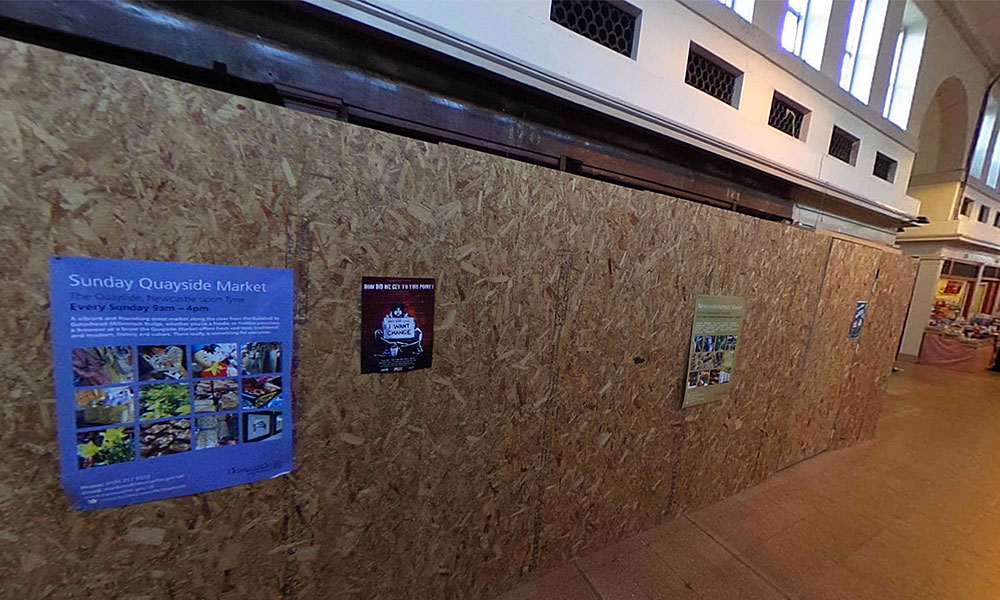
Figure 5
To conclude the visit, the team stopped in a café within the market to discuss the suitability of this market for the extended project. Everyone agreed that it was an absolutely ideal location as it shared many characteristics of Leeds Kirkgate Market (allowing connections to be made) but it was also distinctly different, meaning that new knowledge could be created. In particular, the team felt that the gentrification of Newcastle Grainger Market might have an interesting synergy with the recent and controversial redevelopment of Leeds Kirkgate Market and that Newcastle Grainger Market demonstrated less ethnic diversity but much greater ‘economic’ diversity than many other northern markets, which might reveal new perspectives on the cultural value of such spaces.
The interactive 360° images and binaural sound recording created during the visit can be accessed here: http://tomjackson.photography/interactive/newcastlerecce/ To achieve the ‘emplaced’ effect associated with binaural audio, it is recommended to wear headphones. Interestingly, the auditory experience of Newcastle Grainger Market appears to be rather more ‘sanitised’ than many other markets, with far fewer promotional cries from the stallholders than might be expected, potentially another indicator of its gentrification.
